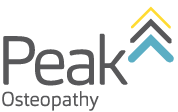Desk work – how can I make it easier on my body?
Many of you will be returning to work after a well earned break over the Christmas/New Year period and, aside from the obvious frustrations about being stuck at your desk all day, your body may well be reminding you of how much better you felt away from work. The body was not designed to sit at a desk for eight or so hours a day and a large percentage of our patients are with us as a consequence of poor posture, bad desk setups and long periods of time chained to the desk. Dr Nick Brasher, osteopath, runs us through some ideas as to how we can stretch at our desk to help improve a day at work.
So what can you do? Well, unless you win Tattslotto tomorrow, work isn’t going anywhere soon, so it’s a question of what you can do to adapt your work situation to make it easier for your body. Regular breaks, increased lumbar support and staying front on to your monitor are examples of simple changes we can make that can help. Desk and chair setup is crucial and is something you should discuss in more detail with your Osteopath depending on your individual requirements and situation.
In addition to this, we’ve put together a quick selection of exercises you can do in the comfort of your office at regular intervals without distracting you from your work or attracting the gaze of your colleagues too much.
• Shoulder Shrugs
Sitting, arms by your side, shrug your shoulders forward five times and then backwards five times. This gets the whole shoulder girdle moving and works the trapezius muscle, which may find itself in a constant state of tension when sitting with poor posture.
• Shoulder blade squeeze
Sitting upright, arms at your side. Squeeze your shoulder blades together, as if you were trying to grip something between them by pulling your shoulders backwards. Do so as far as is comfortable without pain. Hold for 5 seconds and repeat five times.
• Cervical retractions
Sitting upright, pull your chin in towards your chest (as if to give yourself a “double chin”) until you feel an easy stretch at the base of the skull (without pain). Keep the head centred and facing forward. Hold for 5 seconds and repeat five times.
• Cervical rotations
Sitting upright, turn your head to look over one shoulder until you feel a slight, pain free stretch. Keep neck upright and don’t let it fall forward during the rotation. Repeat five times on either side.
• Upper back extension over the chair
Sitting upright on a chair that doesn’t extend higher than your middle back, place your hands above your neck and arch backwards over the chair looking up towards the ceiling. Only go as far back as comfortable and until you feel a light stretch, no pain. Hold for 3-5 seconds and repeat five times.
• Upper back rotation
Begin sitting with your back straight side on to the back of the chair. Place your hands on either side of the back of the chair and rotate in that direction, keeping your legs and back straight. Hold for 3-5 seconds and repeat five times.
• Lower back extension (standing)
Standing at your desk, feet shoulder width apart with back straight, hands on hips. Gently arch backwards without pain and then return to the upright. Repeat 5 times.
The crucial thing about all of these exercises is to do them within a pain free range and that you should be feeling a light stretch rather than a pull. Pain on stretching is an indicator that you’ve gone too far. You may find that some of these are not appropriate for your condition so if you have any queries please just speak to your Osteopath.
They won’t make your work any easier or the pressure from the boss any less but they will make you more comfortable in your work place which can’t be a bad thing.



